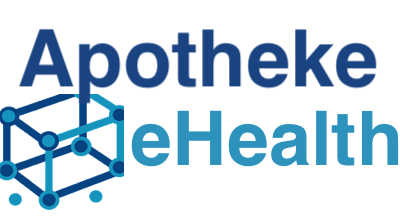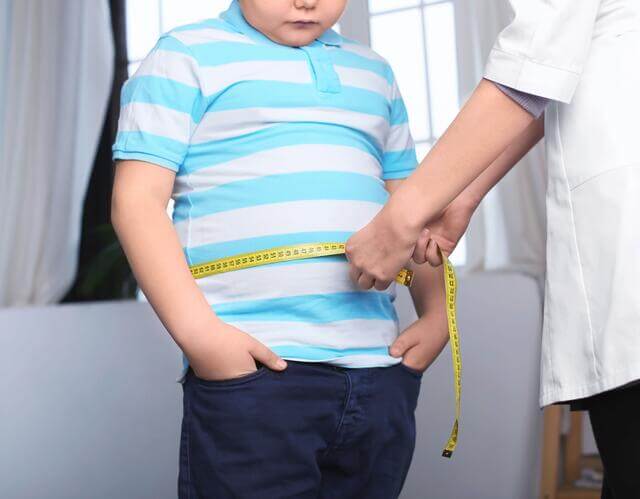The issue of childhood obesity has become a concern for public health both in the United States and globally. When a childs body accumulates body fat that negatively impacts their health it is known as childhood obesity. The consequences of this condition can have short and long term effects on a childs well being. To tackle this growing problem the eHealth Hub (EHH) has created a guide aimed at preventing childhood obesity. In this article we will explore the strategies, initiatives and resources provided by the EHH to address this public health issue.
Getting Started
Childhood obesity is an issue that requires a comprehensive approach to prevent and reverse its harmful effects. The EHH acknowledges the significance of addressing childhood obesity in order to enhance the health and well being of children across the United States.
Prevalence and Impact of Childhood Obesity
Prevalence and impact of childhood obesity
Before delving into the AHAs guide it is crucial to understand how widespread and impactful childhood obesity is. Recent statistics indicate that 20% of children in the United States are classified as obese. This alarming rate has more than tripled in decades making childhood obesity an important concern, for public health.
Childhood obesity has an impact on not only a childs physical health but also their overall well being. It can lead to the development of illnesses like type 2 diabetes cardiovascular disease and orthopedic problems. Furthermore obesity can have emotional effects resulting in low self esteem and negative body image.
Factors contributing to childhood obesity
There are factors that contribute to the occurrence of childhood obesity. These include lifestyles, unhealthy eating habits, genetic predisposition and environmental influences. Unlike generations children today engage in less physical activity spend excessive time in front of screens and lead more sedentary lives. Additionally the availability of processed foods in sugar, salt and unhealthy fats has played a role in poor nutrition and weight gain among children.
The eHealth Hub’s Role in Childhood Obesity Prevention
The eHealth Hub (EHH) plays a role in combating childhood obesity as a prominent healthcare organization. Recognizing the need for collaboration, among hospitals, healthcare providers, schools, communities and families alike is essential to prevent and reduce childhood obesity rates. By leveraging their influence the EHH aims to create an environment that promotes optimal childhood development while reducing the prevalence of obesity.
Strategies to Combat Childhood Obesity
In order to prevent childhood obesity the EHH guide outlines a range of strategies. A key focus is on promoting eating habits encouraging children to consume a well rounded diet consisting of fruits, vegetables, whole grains and lean proteins. Additionally the guide emphasizes the significance of reducing the intake of beverages and processed foods.
Another crucial aspect in preventing childhood obesity is encouraging activity. The EHH recommends that children engage in least one hour of moderate to vigorous physical activity daily. This can include participating in sports, playtime and active modes of transportation. Reducing behaviors like excessive screen time also plays an important role in maintaining a healthy lifestyle.
Education and awareness programs are essential for creating an environment to prevent childhood obesity. The EHH Guidelines highlight the significance of educating parents, caregivers, healthcare providers and educators about the risks associated with childhood obesity while equipping them with knowledge and tools to make informed decisions.
EHH Resources and Initiatives
To bolster their efforts in combating childhood obesity the EHH has developed resources and initiatives. These encompass online toolkits, materials and training programs tailored for health professionals as well, as schools and communities.
The EHH also collaborates with organizations and stakeholders to put into action evidence based interventions aimed at reducing rates of childhood obesity.
Success stories and case studies
Sharing success stories and case studies is a way to inspire and motivate others to take action. The AHAs guide provides real life examples of organizations and communities that have successfully implemented strategies to prevent childhood obesity. These stories of achievement serve as resources offering insights and practical tips that can be replicated in different settings.
The role of parents and caregivers
Parents and caregivers play a role in preventing childhood obesity. The EHH underscores the importance of involvement in promoting healthy habits and creating a supportive home environment. Simple steps like providing meals encouraging physical activity and setting good examples for healthy behaviors can significantly impact a childs well being.
Overcoming challenges and barriers
Preventing childhood obesity comes with its share of challenges. The AHAs guide acknowledges these obstacles while offering solutions to overcome them. These challenges include access to healthy food options insufficient safe spaces for physical activity as well, as cultural and social norms that encourage unhealthy behaviors. By addressing these hurdles communities can establish environments that foster healthy living.
In conclusion addressing childhood obesity requires an approach that tackles multiple aspects simultaneously.
Conclusion
The guide provided by the eHealth Hub is a tool, in combating childhood obesity. It offers evidence based strategies, resources and inspiring success stories. By joining forces individuals organizations and communities can collaborate towards building a future for our children.
Frequently Asked Questions
1. What are the long-term health risks associated with childhood obesity?
Childhood obesity can lead to several long-term health risks, including an increased risk of developing chronic diseases such as type 2 diabetes, cardiovascular disease, high blood pressure, and certain types of cancer.
2. How can schools help prevent childhood obesity?
Schools play a critical role in preventing childhood obesity by providing nutritious meals, promoting physical activity through physical education programs, and implementing policies that encourage healthy behaviors.
3. Are there medications available to treat childhood obesity?
Medication is generally not the first line of treatment for childhood obesity. It is primarily managed through lifestyle changes, including healthy eating habits, increased physical activity, and behavior modification.
4. Can childhood obesity be reversed?
With appropriate interventions, childhood obesity can be reversed. Healthy lifestyle changes, such as a balanced diet and regular physical activity, can help children achieve and maintain a healthy weight.
5. What are some practical tips for families to prevent childhood obesity?
Some practical tips for families to prevent childhood obesity include offering nutritious meals and snacks, limiting sugary drinks, promoting physical activity as a family, setting limits on screen time, and being positive role models for healthy behaviors.
Sources:
“A guide to preventing childhood obesity” Medical News Today https://www.medicalnewstoday.com/articles/childhood-obesity-prevention
“Childhood Obesity” PubMed https://pubmed.ncbi.nlm.nih.gov/34311854/
“Childhood Obesity: Causes and Consequences” Mayo Clinic https://www.mayoclinic.org/diseases-conditions/childhood-obesity/symptoms-causes/syc-20354827

